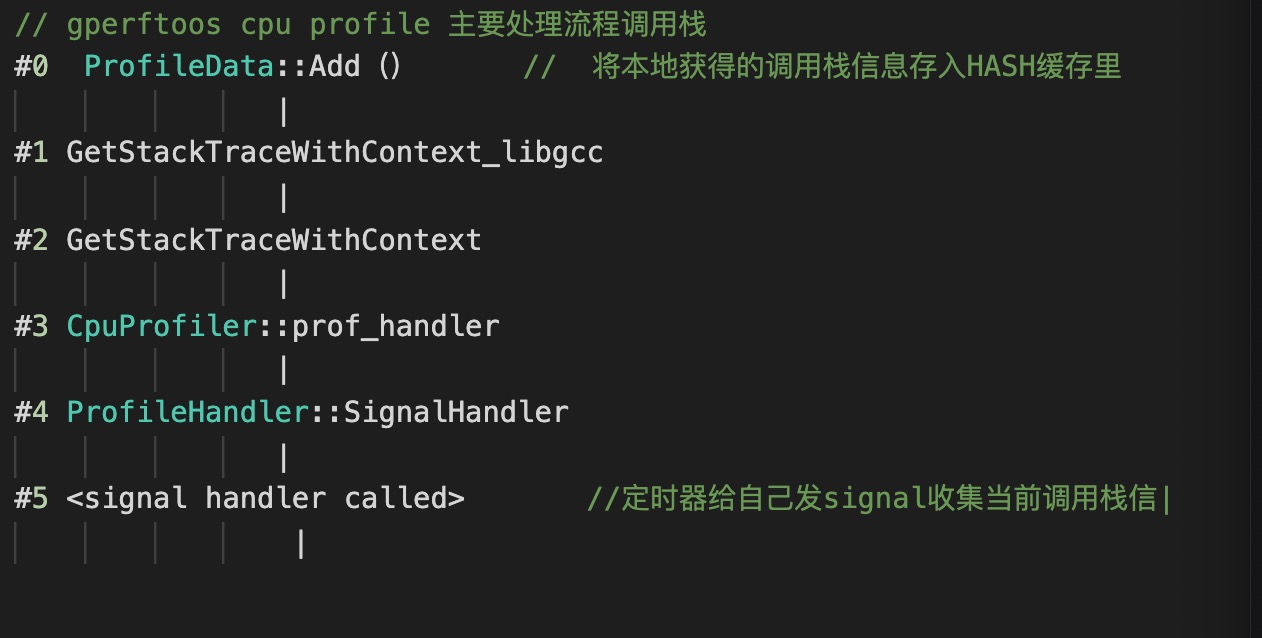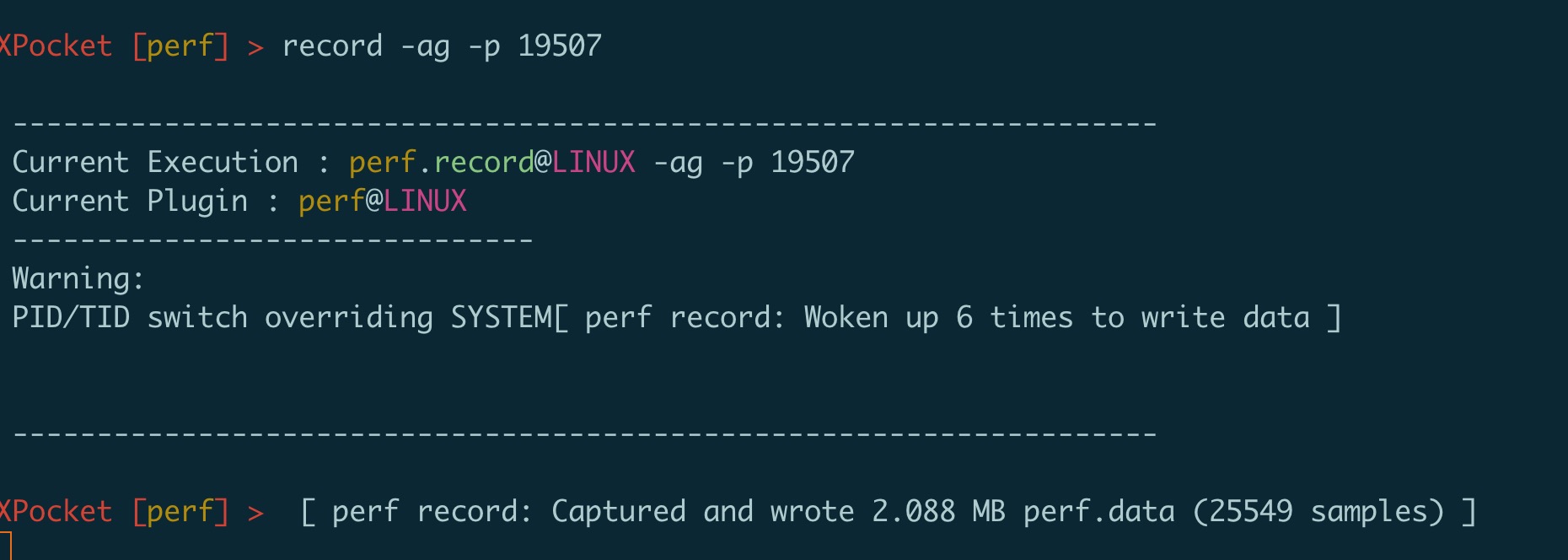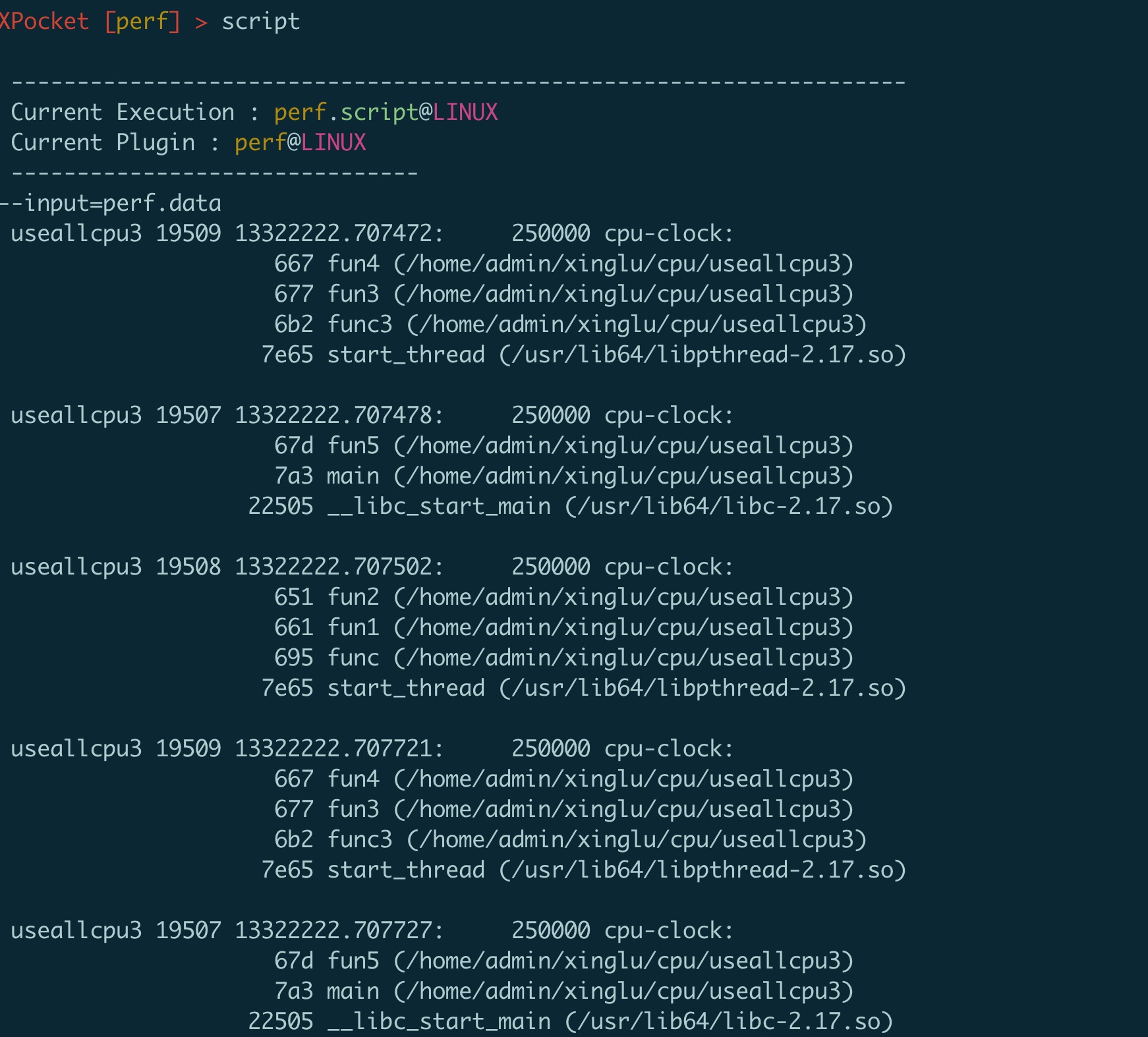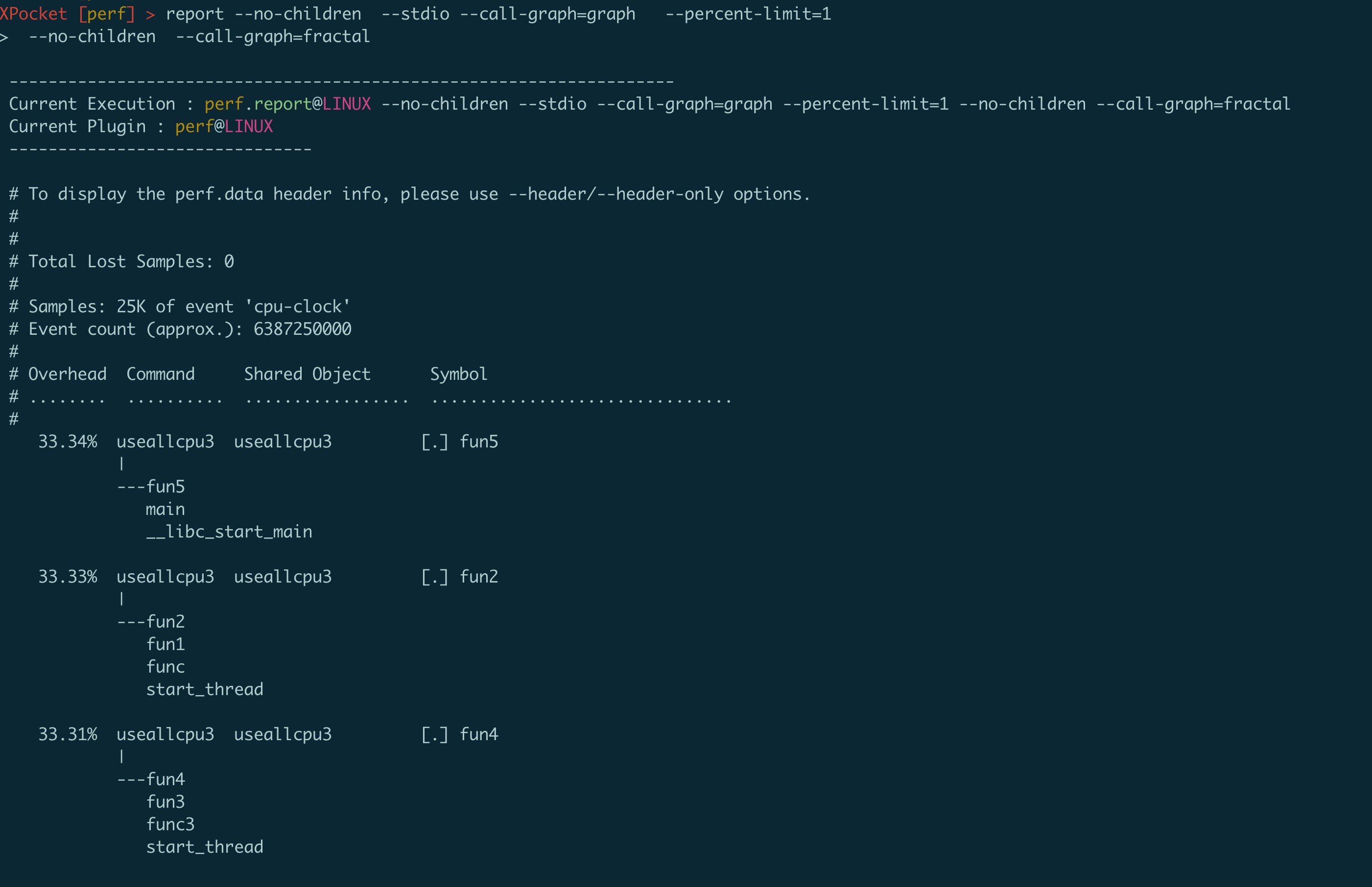

借助Xpocket中的perf插件 了解cpu热点函数的抓取原理
source link: https://club.perfma.com/article/2497635
Go to the source link to view the article. You can view the picture content, updated content and better typesetting reading experience. If the link is broken, please click the button below to view the snapshot at that time.

借助Xpocket中的perf插件 了解cpu热点函数的抓取原理
本文使用了xpocket工具包的插件链接
xpocket地址: https://plugin.xpocket.perfma.com
perf插件地址: https://plug in.xpocket.perfma.com/plugin/57
cpu热点抓取原理,怎么才能知道是进程的哪一个函数消耗了cpu资源呢?目前gperftools,async-profile,perf 都针对不同的语言提供了抓取cpu热点函数的功能,他们抓取的原理都很类似,如果不依赖内核支持的话,简单来说就是在用户空间设置一个timer定时器,timer以一定的频率向进程发送信号,在信号处理函数中可以拿到进程正在执行的调用栈,将采集到这些调用栈统计分析一下,数量最多的那个及时占用cpu最高的热点函数
gperftools的实现代码在profiler.cc,profile-handler.cc, 中定时器回调函数处理流程调用栈如下图所示。
async-proflie的itimer引擎使用了跟gperftools一样的原理,代码更加简单和清晰
#include <sys/time.h>
#include "itimer.h"
#include "os.h"
#include "profiler.h"
long ITimer::_interval;
// SIGPROF信号处理函数,在函数中获取进程的当前调用栈并存储
void ITimer::signalHandler(int signo, siginfo_t* siginfo, void* ucontext) {
Profiler::_instance.recordSample(ucontext, _interval, 0, NULL);
}
Error ITimer::start(Arguments& args) {
if (args._interval < 0) {
return Error("interval must be positive");
}
_interval = args._interval ? args._interval : DEFAULT_INTERVAL;
OS::installSignalHandler(SIGPROF, signalHandler);
long sec = _interval / 1000000000;
long usec = (_interval % 1000000000) / 1000;
struct itimerval tv = {{sec, usec}, {sec, usec}};
setitimer(ITIMER_PROF, &tv, NULL);
//设置timer timer 到期后向当前进程发送SIGPROF信号
return Error::OK;
}
void ITimer::stop() {
struct itimerval tv = {{0, 0}, {0, 0}};
setitimer(ITIMER_PROF, &tv, NULL);
}
原理比较清楚了,但是async-profile默认的引擎和perf工具则是依赖perf_event来抓取热点的并没有使用timer.
perf是一个功能强大的性能统计和分析工具 https://perf.wiki.kernel.org/index.php/Tutorial
perf_event是perf相关的一个系统调用,由内核提供给进程使用功能强大,其中的抓取cpu热点分支相对于上述timer方式存在下面几个优点
- 由硬件和内核触发,更加精确 在最初版本中可以看到当前运行函数的调用栈由intel_pmu_handle_irq()触发,This handler is triggered by the local APIC
- 因为代码在内核中,抓取热点函数调用栈非常的高效,对应用程序性能几乎没有影响
- 不同于gperftools和async需要再目标程序中加载额外代码, perf_event对于目标程序没有任何入侵性。
- perf_event可抓取的信息非常丰富,cpu热点只是其中之一
下面我们使用一个例子,首先构造一个消耗cpu的函数, 该例子为了测试调用栈的抓取情况,调用层次比较复杂一些
#include <pthread.h>
const int num = 2;
int fun2()
{
while(1) {}
}
int fun1()
{
fun2();
}
int fun4()
{
while(1) {}
}
int fun3()
{
fun4();
}
int fun5()
{
while(1) {}
}
void *func(void* arg) {
fun1();
return ((void *)0);
}
void *func3(void* arg) {
fun3();
return ((void *)0);
}
int main(int argc, char* argv[]) {
int i,j;
pthread_t threads[num];
//for ( i = 0; i < num; i++) {
pthread_create(&threads[i], NULL, func, NULL);
pthread_create(&threads[i], NULL, func3, NULL);
//}
fun5();
for (i = 0; i < num; i++) {
pthread_join(threads[i], NULL);
}
return 0;
}
编译运行改程序,使用xpocket工具中的perf插件抓取cpu热点:
上图抓取进程 19507的cpu热点共抓到25549条数据,我们可以通过script命令看一下抓取到的数据大概是什么样子的
就是抓取的一条一条调用栈
通过report命令对抓取到的调用栈进行下汇总和总结得出热点报告
可以看到调用栈和每个函数占用cpu百分比都清晰的展示了出来。
Recommend
-
 12
12
预告 | XPocket开源产品发布会将于1月15日19:30正式线上直播!小稳_PerfMa3天前随着全球开源生态不断发展,开源项目数量已呈指数级增长,并且逐...
-
 15
15
XPocket插件jstack_x助力线程问题排查 | PerfMa应用性能技术社区文章>XPocket插件jstack_x助力线程问题排查XPocket插件jstack_x助力线程问题排查
-
 11
11
使用XPocket插件top_x 解决cpu高及 cpu_load高的一般思路使用XPocket插件top_x 解决cpu高及 cpu_load高的一般思路小子zlinux1天前
-
 8
8
XPocket插件中心|JStack_X、Top_X插件上新,欢迎下载使用小稳_Perf...
-
 13
13
空无3天前 报名 XPocket 插件开发已经很久了…… 拖到现在才开始写代码的主要原因,还是自己懒,什么工作忙那都是借口。一个集成插件的事,能占...
-
 5
5
堆堆性能问题排查XPocket1周前你是否遇到过这些问题? 系统存在性能问题...
-
 4
4
利用 Xpocket 的 ss 插件获取 socket 信息文章>利用 Xpocket 的 ss 插件获取 socket 信息利用 Xpocket 的 ss 插件获取 socket 信息
-
 3
3
XPocket 插件 iostat 实践XPocket 插件 iostat 实践小邋遢1周前 本次实践案例目的在于帮助用户快速使用插件iostat,以及认识基本的指标含义。
-
 6
6
使用XPocket插件vmstat查看上下文切换 | HeapDump性能社区文章>使用XPocket插件vmstat查看上下文切换使用XPocket插件vmstat查看上下文切换
-
 9
9
CPU热点函数抓取原理 发表于...
About Joyk
Aggregate valuable and interesting links.
Joyk means Joy of geeK



